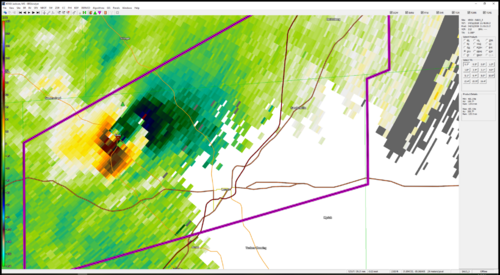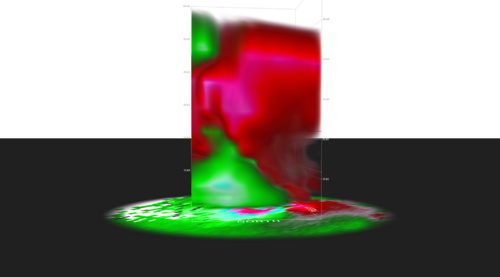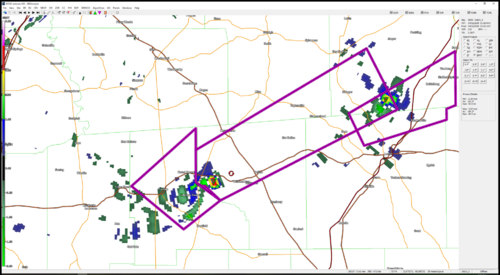A person on the Discord server posted the following comments, just wondering what y'all's thinking on this is:
"For Easter Sunday, there's still just one burning question to me in which I'd love to hear opinions on. Despite this being a very massive tornado outbreak with more and more tornadoes being reported even still, the one part that did NOT make sense to me was Southern AL having very few tornadoes and a very mitigated threat while being surrounded with strong tornadoes. S AL had a lot of surface heating in the warm sector after the midday mess of storms went through, and if North-Central AL and S GA didn't have these problems with reheating, It doesn't make sense that S AL would've had them. When the two strong supercells that put down the Bassfield tornado family first came out of the elevated LA convection, it was assumed that these supercells would continue to track deep through AL in a very healthy warm sector. The first cell, however, inexplicably died as it got close to the MS/AL border. The cell, when it died, accelerated and turned VERY hard left, going almost due north up the state line. The second, trail cell that also was producing tornadoes did almost the exact same thing at the exact same location. The third supercell in the line, which never quite produced tornadoes iirc but was a healthy looking supercell that looked to become dominant, also behaved very similarly, and again in almost the exact same location. The HRRR nailed the development of the first two supercells, but did not anticipate their death. The burning question for me is: why did these supercells die in what looked to be an extremely healthy environment? Does the rapid left turn indicate capping problems and them becoming elevated as they got to the border, perhaps because the cap hadn't eroded enough? Or is there something else at play here?(edited)
In addition, new elevated development in the LA panhandle, further south than the 2x EF-4 family that started just west of the same location, was fully expected to become supercellular with time as they went more surface based in SE MS. This Cellular development, however, never quite went surface based, and it appeared to form into a messy squall before it could become fully surface based. This squall didn't become organized in a QLCS mode until it reached Georgia, with S AL getting a grungy, messy squall that produced nothing but severe winds. As soon as this squall got past AL, it became more QLCS in nature and produced numerous tornadoes, including eventually leading to the stronger ones that impacted Southern SC at about 11Z (two of which got EF-3 ratings, iirc). I've heard a few theories about why this has taken place, but I'd like to get more opinions from people who know more about this event than I do. The theories I've heard thus far: 1) Surface heating wasn't as great in AL, and the cap was still in place; as a result only more linear storm modes were sustainable in that area 2) Winds veered unexpectedly early, killing surface convergence in S AL. Even if this was the case, why'd the storms suddenly become more tornadic once they reached GA? The shear profiles in AL were still off the charts during the event. 3) The elevated convection in the LA panhandle was growing upscale before it could become surface based, and by that time needed way more time to organize and mature before being able to produce tornadoes. I would favor this theory being that it most closely resembles what I saw on radar during the event, but it doesn't explain the abrupt death of the first supercell family. 4) The shear in S AL was so great that it tore apart the updrafts of any supercells in the area. This could make sense, but wouldn't deeply established supercells be able to harness that energy anyways?
I'm hoping that some of you have more answers than I do. It's certainly an interesting case study given the ridiculous parameters in place in S AL during the event."





